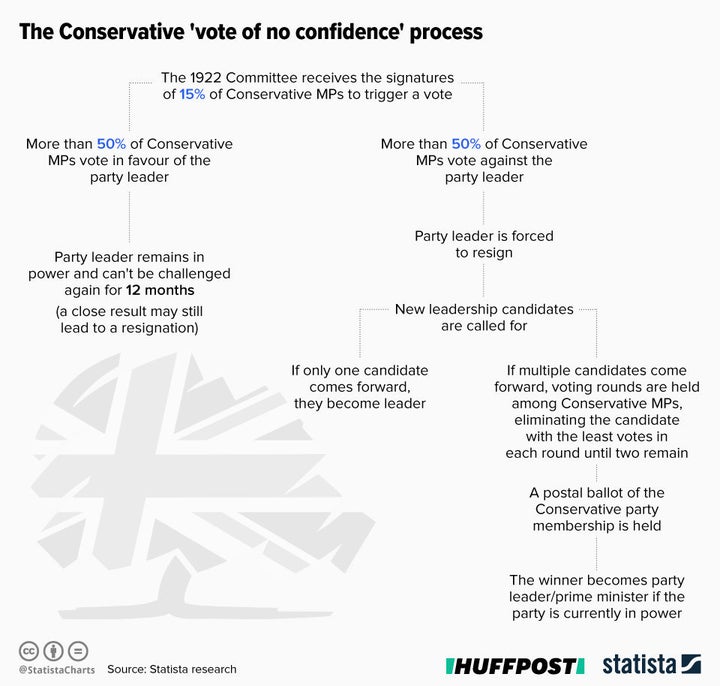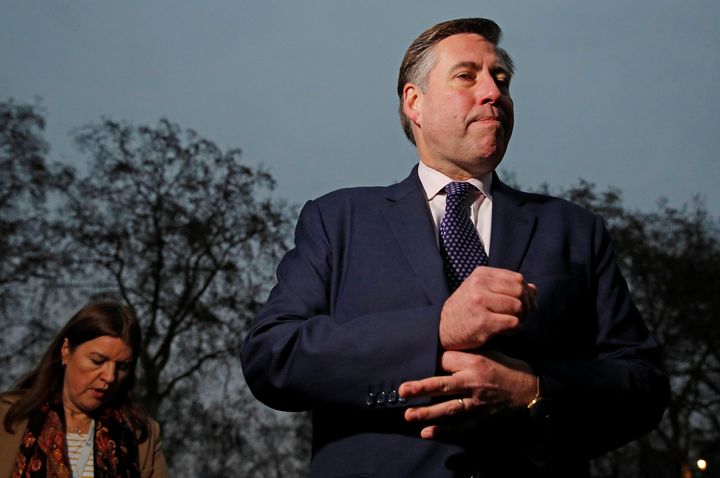
Theresa May’s leadership is officially in turmoil as a vote of no confidence has been triggered.
A threshold of 48 letters of no confidence – 15% of Tory MPs – has been exceeded, chairman of the Conservative backbench 1922 Committee Sir Graham Brady announced.

What Happens In A No Confidence Vote?
May will need the support of more than 50% of the 315 sitting Conservative MPs to stay in office – so 158 in total. But even if she wins, if the margin of victory is small her authority may be fatally wounded.
When Will The Vote Be Held?
The ballot is from 6-8pm on Wednesday evening, and the result is announced shortly afterwards.
What If May Loses?
If the PM loses the vote, she would not be able to stand in the subsequent leadership contest arranged by Brady.
How Would That Work?
Candidates for the leadership must be nominated by two Conservative MPs. If only one candidate comes forward, he or she becomes leader.
If a number of would-be leaders are nominated, the list is whittled down to a shortlist of two in a series of votes by MPs.
The final pair then go to a postal ballot of all party members, with the
position of leader – and prime minister – going to the victor.

How Long Would That Take?
Brady would be responsible for overseeing the contest and setting a timetable for the campaign, which would be expected to last around 12 weeks – although those calling for May to go believe it could be accomplished much quicker.
The PM could remain in the post during the campaign period.
Who Are The Contenders To Take Over As Tory Leader?
Bookmakers have Boris Johnson and Dominic Raab as joint favourites, followed by Michael Gove and Sajid Javid.
Although cabinet colleagues like Javid have voiced support for May, they could become contenders if she loses the no confidence vote.
What Is The 1922 Committee?
Widely known in Westminster as “the ’22”, the committee of all backbench Conservative MPs meets weekly when the House of Commons is sitting.
The committee takes its name from a meeting of Conservative MPs on October 19 1922. The MPs successfully ended the party’s coalition with the Liberals, bringing down the government of David Lloyd George. The resulting general election was won by the Tories.
